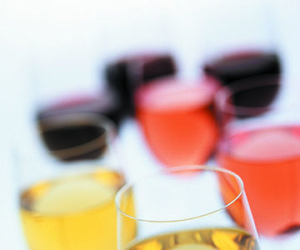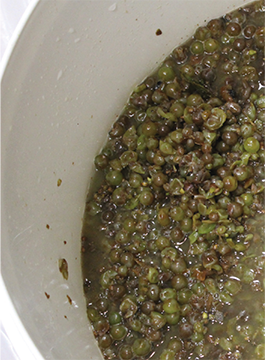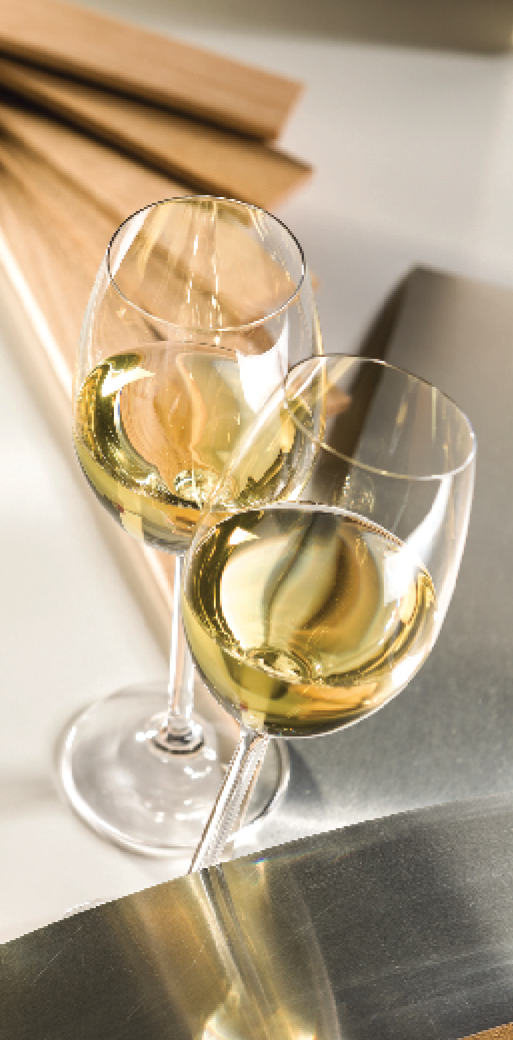
To Oak, or not to Oak, a phrase I took from Shakespeare’s play Hamlet and changed the words around a little. But going a step further and delving into the tools that winemaker’s have in their hip pocket, are all the tools necessary?
Some winemakers think they have to follow a certain recipe or protocol in winemaking to make their wines acceptable. The reality of it is, there are many tools at the fingertips of us winemakers; designer yeasts for tailored flavor profiles exploiting the grapes natural compounds, enzymes for color enhancement, or sulfur dioxide, an all-important savior in the winemaking process to name a few. The question comes up on a regular basis: Just because the tool exists, do we need to use it?
Yeasts, most certainly, should be considered. Enzymes are somewhat of a judgment call; depending on the grape, you might just be throwing away money. In my opinion, sulfur dioxide is a must. There is a reason that the prize offered in the eighteenth century in France for a comparable substitute for sulfur dioxide still remains unclaimed. And finally, with respect to oak and oak-based products, the decision is based on the grape type, style of wine you are looking for, and the type of oak you wish to use — or if you should use any oak at all.
There is no doubt that the wine industry has exploded in the last thirty years. There are thousands of labels out there, and in the beginning they were often marketed as a specific varietal, the best-known examples being Chardonnay and Cabernet Sauvignon. Then there was a class of winemakers who chose to try to stand out a little differently by putting an emphasis on products that saw no oak aging, which included mostly white wines.
My first recollection of seeing a wine with this emphasis was at a winery in El Dorado County, California, who had a catchy label to begin with, but then had a catchy word on the label: “Unoaked.” It certainly panned out to be a catchy wine inside the bottle too. At the time, about the mid-1990s, this wine stood out. Back then, all the wine giants were competing in the fighting varietals classification of oaky, uninteresting Chardonnay, most of the fruit of which was grown in the Central Valley of California that all underwent a barrel fermentation followed by a full blown malolactic fermentation and was then sent to mass markets where it was placed in end stacks and sold like the Facebook stocks before going public. Wines from one producer to another really did not show any appreciable difference, and eventually the wines were so general that you could predict what you were going to taste before doing so; vanilla, toast, cream and butter in no particular order of importance. But the un-oaked versions of Chardonnay had a different statement for those wanting to be a little more adventurous. They were crisp, acidic and full of fermentation bouquet esters. These wines were giving the statement, “Take me on a picnic, and don’t forget the hors d’oeuvres.” Interestingly, this style of Chardonnay was a shift back to old-world winemaking as you’ll read later.
The point of all this is that oak is a winemaking tool, and like all tools you need to know how to use it properly — if you choose to use it at all. If you use too much oak the fruit disappears forever and the wines become an unfriendly partner with food. By not using oak, you place more of an emphasis on the alcohol level, varietal character, overall acid structure and mouthfeel.
 Barrels and Alternatives
Barrels and Alternatives
By and large, the nature, use and effects of oak barrels require extensive discussion. Oak barrels offer three effects over stainless steel. First there are extractable compounds that contribute to the flavor profile in the wine it is exposed to. Secondly, the evaporation that occurs from the barrel produces ullage, or an airspace, which will ultimately contribute some oxygen exposure. This contributes to the third point that this oxygen exposure is good for small doses that will promote softening of the tannins in the wine. This is a phenomenon known as micro-oxygenation, not to be confused with the process of micro-oxygenation, or MOX, which intentionally introduces oxygen to the wine in small controlled dosage using sophisticated equipment. For more about micro-oxygenation and macroaeration, go to www.winemakermag.com/component/resource/article/541. To understand barrel chemistry and physics, we first have to look at the simple physical characteristics of a barrel.
Barrels today are generally available in a variety of sizes. The 225-L volume is the current wine industry standard. How this size was adopted was more of a practical aspect of handling the barrel rather than based on the research at the time. Dr. Vernon Singleton at UC-Davis pointed to larger volumes giving the optimal surface area to volume ratios. The two most popular barrel sizes available to home winemakers are the standard 225-L barrels and the 120-L ‘half-barrel.’ The surface area to volume ratio for the smaller barrel is larger, which results in a greater extraction rate of oak extractables in the wine. And for the small 60-L barrels, the ratio increases even more. Therefore the length of time in the particular oak is not pre-scripted but rather a function of how the wine tastes based on the type of barrel used.
The most common types of wood used in barrel making are French oak and American oak. They are both classified as white oak but are two distinct species; Quercus petraea and Quercus alba, respectively. More affordable alternative oak barrels are available that are made from wood grown in Eastern Europe, mostly Hungary, that are also usually Quercus petraea. These barrels are less expensive because they are relative newcomers to modern winemaking and have not yet built up the reputation that French and American oak barrels have. All barrels, French or American or otherwise, offer a different flavor profile based on their individual species and where they were grown. Singleton showed in his research that the European species of oak had higher levels of extractables than the American species. His research also pointed out that subsequent re-fillings of the same barrel decreases the extractives by one-half, thus requiring twice as much time in the barrel to get the same effect. Subsequent re-fillings will provide similar extractives, but even longer periods of time are needed, which is not practical in the typical life of a wine. After about three to four refills, the barrel is considered neutral, which means that its main purpose is not necessarily for extractives but to help in micro-oxygenation of the wine.
Oak products, or oak alternatives, are other aspects to consider, especially for home winemakers who work with small batches. Many suppliers produce these products in a variety of configurations ranging from cubes, chips, shavings and staves. French or American oak are the basic flavors but then some producers go as far as calling them “high spice” “high toast,” or “high vanilla.” They also have proprietary toasting regimes with catchy phrases for you to copy into your winemaking log. I have had the benefit of working with these products as part of our teaching program and have produced some very nice tasting wines. However, you will experience the same variability with oak products as you would with barrels, thus they should be used carefully. The wrong thing to do is to trust the flavor profile as advertised. Our general protocol in the UC-Davis winery is to test multiple products on the same wine, all the while, treating each experimental lot exactly the same, with the exception of the product used. Our results from this testing found variability based on the product, length of contact time, and temperature at which the trial was conducted. The flavors are attained but must be done so in the protocols specified by the manufacturer. If you are considering using these products, run your own individual trials on a small batch (which in winemaking is called a bench trial) of your wine to see if it is creating a desirable effect, taking notes along the way. If you find something you like and want to scale it up to the whole batch, make sure the same conditions of extraction are maintained, specifically, looking at the weight of the product relative to the volume of wine (mass/volume), contact time, and then tasting the wines and removing the product when it tastes right. Your home trial may be one week of exposure, but when scaled up, that contact time is not always going to be proportional.
Regardless of barrel or oak product, however, how much extraction is needed? As mentioned previously, the time spent in the barrel or in contact with the wood is not pre-scripted, and in some cases the use of wood is not called for. Many white and rosé style wines stand-alone without the use of oak. A good acidic balance is needed and cool weather grapes are ideal candidates. Chardonnay, Pinot Gris, Gewürztraminer and Riesling are a few good examples. With respect to rosé, I feel that oak should not normally be used, although I have tasted a few good examples made with oak.
Oaked Whites
If you are going to use oak in white winemaking, however, there are a few scenarios to consider. The first technique is using the barrel as a fermenter. During the fermentation, the yeast assimilates the oak extractives, which can lead to wines that have a creamier mouthfeel and subtle hints of clove or vanilla. A common example of this is many of the California Chardonnays on the market today. A less common, often overlooked, example is white Bordeaux, specifically Sauvignon Blanc and Sémillon in a blend that is fermented in a barrel, allowed to sit for a certain amount of time sur lie, then racked and blended back carefully with a portion of the same wine made in stainless steel only. The resulting wines have only hints of oak and are not astringent but very creamy in texture. Chenin Blanc wines made with oak from the Loire Valley, which are produced in the same style as Bordeaux, are also lesser known. Careful attention to temperature control is required when barrel fermenting this way to preserve the fermentation esters. You must be able to hold the ambient temperature to less than 65 °F (18 °C) and produce enough wine to top up the barrel after fermentation is over. Do not fill the barrels to the top with juice and inoculate as the fermenting wine will expand and create quite a mess! Instead, get the fermentation started in an alternate vessel, such as a stainless steel container, and add it to the barrel when it reaches about 19–21 °Brix. Keep some of this wine separate and let it become the ‘top up’ wine later when fermentation starts slowing down.
The second technique for white wines is to use the barrel as an aging vessel. White wines are typically kept in the barrel for less than one year, although some producers keep them in the barrel for as long as 12 to 18 months. It’s hard for me to imagine keeping the wine in the barrel that long, and my longtime readers will know that this is not a style I prefer. White wines are more susceptible to oxidation and this length of time seems excessive under normal winemaking conditions. Regional styles take advantage of this, such as an oxidized version of the grape Savignin in the Jura region of France, which actually spends six years in the barrel.
Oaked Reds
The general norm of making reds is to expose all red wines to oak to take advantage of the micro-oxygenation process, especially if the wine has a very firm tannin structure. The aforementioned principles on oak type, duration and oxidation I discussed for whites, still apply but with a little more forgiveness. Red wine will benefit from the micro-oxygenation. Softening of the tannins, chemically, is the process of the bitter tannins polymerizing, or chemically bonding to one another, which changes how they are perceived when they enter the mouth. Red wines will benefit from some oxygen exposure as long as it is not excessive. For winemakers who work with large batches in winemaking clubs or have multiple barrels, sometimes the wine is intentionally over oaked in some barrels and then used as a blending component with the overall lot. The reality of using barrels is the extraction rates from barrel to barrel vary even amongst the same cooper.
Thinking Outside the Barrel
Since those early un-oaked Chardonnays I mentioned earlier debuted back in the 90s, many New World winemakers have capitalized on the idea that not every wine needs to see the inside of a barrel, and many New World wine drinkers are starting to take notice.
Chardonnay has, as I mentioned at the beginning of this story, led the charge, and a visit to any local North American wine merchant will provide you with many examples of excellent un-oaked or “stainless steel” Chardonnay. This change went back to Chardonnay’s roots. Chablis, the northernmost wine district in France’s Burgundy region, grows mostly Chardonnay and it’s not very common to use oak in their winemaking, save for a limited volume of premier cru or grand cru labels, which spend a very short time in barrels. These Chardonnay vines produce fruit high in acidity and low in alcohol with flinty characters. These are food friendly wines of which there are so many in France.
However, some wine varietals and styles have traditionally never lent themselves well to oak, or could go either way depending on the whim of the wine-maker. Going either way means dissecting the fruit and its origins. Warmer climes tend to produce fruit that requires acid supplement. The skill and expertise of the winemaker are critical here to not over acidify to produce an un-oaked
version. The example we see with Chardonnay is one that looks at the geographical source of the fruit. In reality, a very small percentage of the Chardonnay grown in California has the acid structure of the grapes of Chablis and can be stylistically tailored to those of Chablis. Thus California winemakers produce a product with a name that sells and a style that balances the quality of the fruit they were given to start with. The majority of fruit grown in California needs acid supplement and that if done correctly, can produce some fine un-oaked wines but it is the challenge of the winemaker to find the right fruit flavor balance. Chardonnay grown in climates that can provide that Chablis-esque acid structures would be natural candidates for un-oaked experiments.
Traditionally, and as I have pointed out, red wines are oaked for the aforementioned reasons. But there are many red wines available with soft tannins and high acidity that are prime candidates for either using or eschewing oak that are the choice wines of their region. Italian Barberas and Nebbiolos are prime examples. Also, in the Beaujolais region of southern Burgundy, for example, the Gamay grape does double duty in producing the Beaujolais Nouveau, or what is described as a light red style specifically made to be consumed by less than six months of aging (actually more like three months if you can get them — it should be drunk as soon as it becomes available on the shelves as it does not need aging). Gamay also makes a more traditional red wine that is aged in barrels for up to 12 months, sometimes longer.
Red wines that do not have a lot of astringency actually taste very nice when they are made in an un-oaked style. If you produced a small batch of red wine that fits this profile in your home winery, there is really no reason to put it in an oak regime. Sometimes, with small volumes, it is better to get the wine stabilized, clarified and bottled. The general rule in winemaking is that the smaller the storage vessel, the more likely the wine will go bad.
 Un-Oaked Winemaking
Un-Oaked Winemaking
Balancing those attributes that I mentioned earlier — alcohol level, varietal character, overall acid structure and mouthfeel — is the challenge when making an un-oaked wine. Start with alcohol, which has a significant effect on mouthfeel; too high and the wine can be thin and bitter. Target your alcohol for these crisp un-oaked wines to 12.5 to 13.0%. Use yeast that enhances the natural flavors of the grape, contributes to ester formation, and even consider a sur lie aging to improve the palate feel. Lastly, acid balance is critical. It’s hard to say what level of acidity works amongst different varieties. Acid balance is something you have to taste for and the juice is the first and best place to evaluate. If you can taste acid when the juice is 24 °Brix, you have too much. Measure your acidity, do acid trials with the juice and taste. I find the right juice to be just less of acid perceptibility in a juice at 24 °Brix. Certainly how much sweet and how much tart is all a part of the fun in making fine wines at other Brix levels. You just have to try different scenarios.
Oak or No Oak
To understand flavor balance in your wine, you must first understand some of the basic principles to consider when deciding whether or not to use oak or oak products. It’s not at all a bad thing to use oak, you just need to understand its limitations to use it well.
As a home winemaker, the decisions of whether or not to use oak vary. It is very difficult to control flavor extractions for small volumes, even on a single barrel scale, and then finding the right barrel is also difficult. New barrels are also expensive, to say the least. Then there are the other factors to consider that come along with that new barrel, such as initial flavor extractions that can overpower the wine, so you must be prepared to cycle at least two wines through the barrel in the first season. Some winemakers overcome this by seeking out used barrels that may be cycled out of a commercial program and made available for discounted prices. The use of oak alternative products cannot always be the least expensive given some of the research and technology it takes to produce and promote these products. So armed with a bevy of knowledge, the dilemma — To oak or not to oak — is strictly yours.

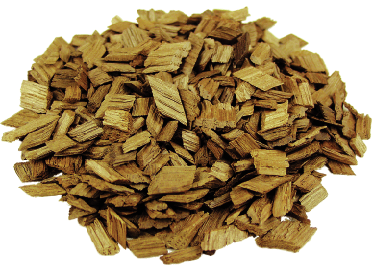 Barrels and Alternatives
Barrels and Alternatives
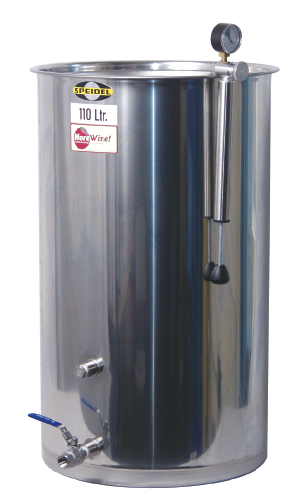 Un-Oaked Winemaking
Un-Oaked Winemaking
